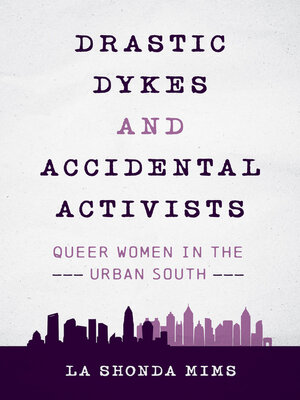
Sign up to save your library
With an OverDrive account, you can save your favorite libraries for at-a-glance information about availability. Find out more about OverDrive accounts.
Find this title in Libby, the library reading app by OverDrive.



Search for a digital library with this title
Title found at these libraries:
| Library Name | Distance |
|---|---|
| Loading... |
After World War II, Atlanta and Charlotte emerged as leading urban centers in the South, redefining the region through their competing metropolitan identities. Both cities also served as home to queer communities who defined themselves in accordance with their urban surroundings and profited to varying degrees from the emphasis on economic growth. Uniting southern women’s history with urban history, La Shonda Mims considers an imaginatively constructed archive including feminist newsletters and queer bar guides alongside sources revealing corporate boosterism and political rhetoric to explore the complex nature of lesbian life in the South.
Mims’s work reveals significant differences between gay men’s and lesbian women’s lived experiences, with lesbians often missing out on the promises of prosperity that benefitted some members of gay communities. Money, class, and race were significant variables in shaping the divergent life experiences for the lesbian communities of Atlanta and Charlotte; whiteness especially bestowed certain privileges. In Atlanta, an inclusive corporate culture bolstered the city’s queer community. In Charlotte, tenacious lesbian collectives persevered, as many queer Charlotteans leaned on Atlanta’s enormous Pride celebrations for sanctuary when similar institutional community supports were lacking at home.
Mims’s work reveals significant differences between gay men’s and lesbian women’s lived experiences, with lesbians often missing out on the promises of prosperity that benefitted some members of gay communities. Money, class, and race were significant variables in shaping the divergent life experiences for the lesbian communities of Atlanta and Charlotte; whiteness especially bestowed certain privileges. In Atlanta, an inclusive corporate culture bolstered the city’s queer community. In Charlotte, tenacious lesbian collectives persevered, as many queer Charlotteans leaned on Atlanta’s enormous Pride celebrations for sanctuary when similar institutional community supports were lacking at home.







